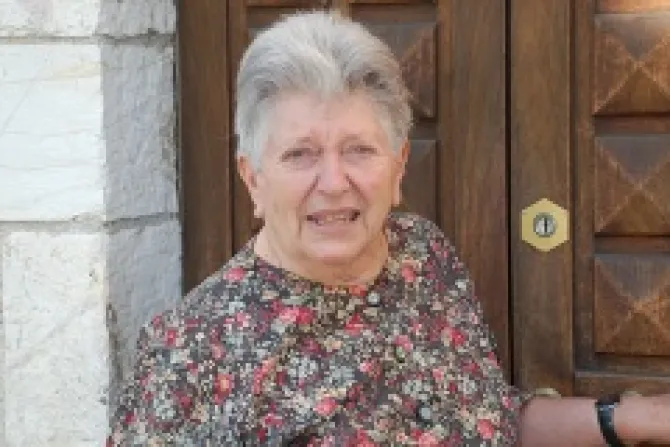Assisi, Italy, Oct 5, 2013 / 04:57 am
The last living person whom the Bishop of Assisi saved from being killed during the Holocaust met with Pope Francis yesterday, thanking him for the Church's role in protecting her people.
"Thank you for what the Church did for us," Graziella Viterbi, 88, told Pope Francis Oct. 4 at the archbishop's residence in Assisi, where her family fled as refugees in 1943.
"I thank you," Pope Francis replied. "Pray for me."
Before this exchange, the two had greeted each other, both saying "shalom."
The two met in the "hall of divestment," the room in the bishop's residence where St. Francis stripped off his clothes and embraced a life of poverty dedicated to Christ.
Pope Francis is the first Pope in 800 years to have visited the room, where many Jews stayed during World War II.
Archbishop Domenico Sorrentino, of the Diocese of Assisi-Nocera Umbra-Gualdo Tadino, said in his address at the meeting that in that very hall, his predecessor, Bishop Giuseppe Nicolini, had welcomed many Jews during the time of Nazi occupation.
Around 200 Jewish refugees moved to Assisi during World War II, where there had never before been a Jewish community. Viterbi's father, Emilio, moved his family there in 1943.
Emilio Viterbi had been a highly esteemed professor at the University of Padua, but lost his position there in 1938 when Italy's fascist government issued racial laws which excluded Jews from higher education and public office.
In 1943, the Viterbis moved to Assisi after Italy's armistice with the Allies. Assisi attracted many refugees as its location in central Italy was closer to the front lines. The north of Italy, including Padua, was at the time under Nazi control.
Bishop Nicolini, who was a Benedictine and had been Bishop of Assisi since 1928, built a clandestine network to help Jews, saving them from Nazi persecution. Very few Assisi residents were even aware of the some 200 Jews among the refugees in their city.
According to Graziella Viterbi, Bishop Nicolini "kept the authentic identity cards of all the Jews hidden in Assisi in a niche right behind his working desk."
Bishop Nicolini managed the secret network together with his secretary, Fr. Aldo Brunacci; Fr. Rufino Nicacci, Franciscan guardian of the Church of San Damiano; and with Michele Todde, of a convent in the city.
More than 300 Jews were saved by the network, which disguised them in convents and monasteries, especially among cloistered women.
The network was spread across a wide area, including even Florence and Genoa, some 250 miles away. The late cyclist Gino Bartali, who was recognized this year as "Righteous Among the Nations" by Israel, reportedly served as messenger for Bishop Nicolini's network.
The network was completed by two typographers, Luigi and Trento Brizi, who printed false documents for the Jewish refugees. Viterbi recounted that the city's mayor, Arnaldo Fontini, cared for all her family's religious objects, "hiding everything in his garden."
(Story continues below)



